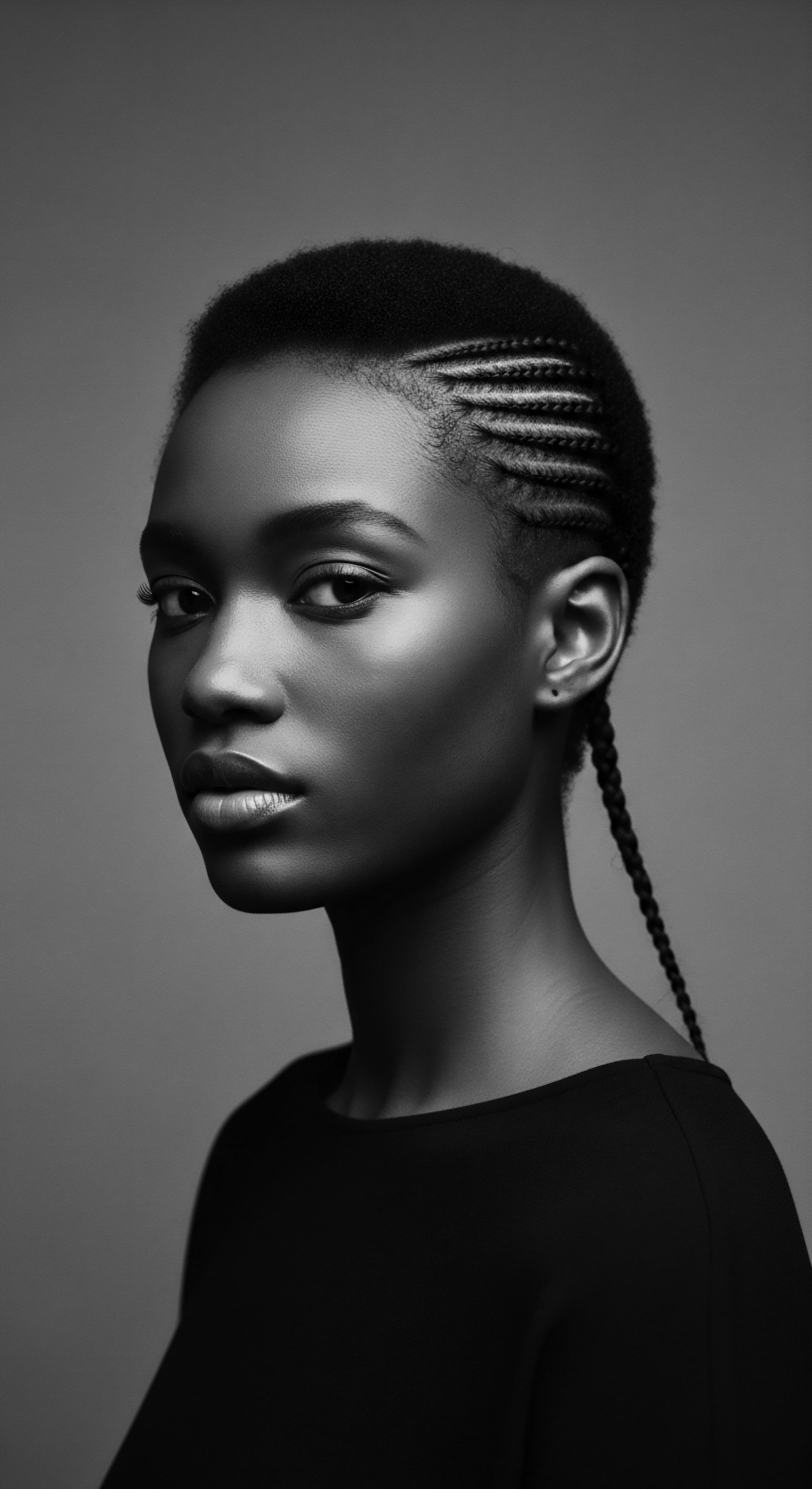
Roots
In the quiet corners of our collective memory, where ancestral whispers meet the hum of modern life, lies a fundamental truth ❉ hair is not simply a biological extension of our being. It is a chronicle, a living parchment bearing the intricate script of identity, resistance, and belonging. For those with textured hair—the coils, curls, and waves that defy neat categorizations—this truth rings with particular resonance. Our strands carry stories passed down through generations, narratives woven into the very helix of our being.
Yet, as we step into the contemporary world, particularly the structured environments of employment, how do current workplace policies influence the choices we make concerning these ancestral expressions? This inquiry calls us to consider not just the superficial, but the profound interplay between cultural legacy and institutional expectations.
To truly grasp this question, we must return to the source, to the elemental understanding of textured hair, its foundational anatomy, and the language used to describe it, both ancient and contemporary. This is where heritage and science converge, illuminating the deep roots of our present circumstances. The policies shaping today’s workplaces do not arise from a vacuum; they are often echoes of historical biases, subtle reverberations of past societal norms that have long sought to standardize appearance along Eurocentric lines. Understanding this historical arc is paramount to recognizing the contemporary challenges and triumphs.
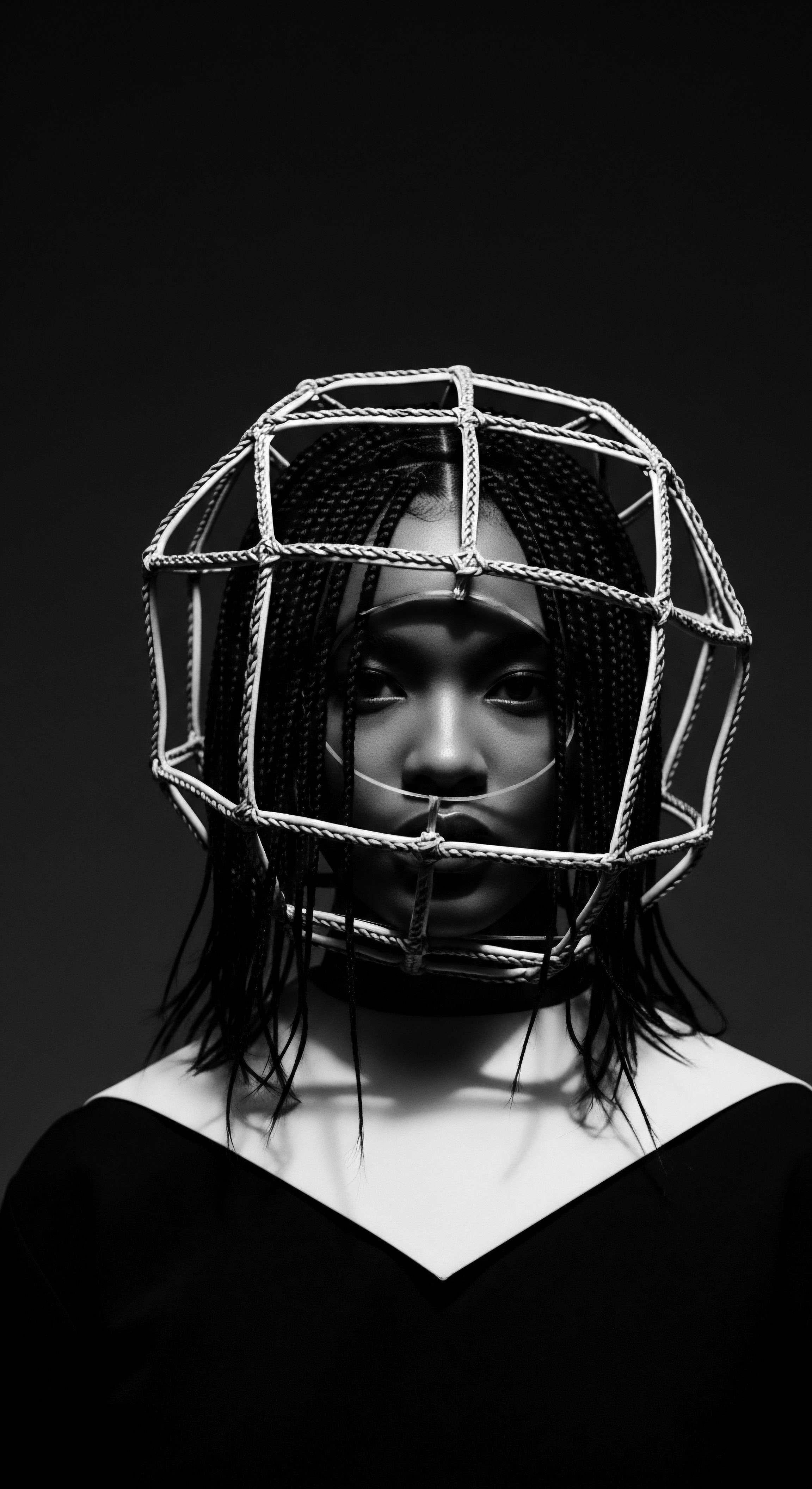
What are the Inherent Characteristics of Textured Hair?
Textured hair, at its very biological essence, possesses distinct characteristics that distinguish it from straighter counterparts. Its elliptical or flat cross-section, coupled with varied twist patterns along the strand, gives rise to its signature coil and curl. This unique architecture, when viewed through a scientific lens, explains its tendency for volume, its capacity to hold moisture (or lose it rapidly), and its inherent strength when properly cared for. Historically, ancestral communities understood these properties intuitively.
They developed sophisticated care regimens that honored the hair’s natural inclination, drawing from botanicals and communal practices. The knowledge of these inherent traits was not codified in scientific papers as we know them today, but in the passed-down wisdom of elders, in the feel of grandmother’s hands as she braided, in the efficacy of plant-based oils and butters harvested from the earth. The very genetic markers that determine hair type are themselves a testament to the diverse human journey, a legacy imprinted over millennia.
The intrinsic nature of textured hair, understood through centuries of ancestral wisdom and now by modern science, stands as a testament to biological diversity.
The history of hair classification itself holds a mirror to societal attitudes. Early systems, often rooted in colonial anthropology, frequently categorized hair types in ways that privileged European textures, inadvertently positioning other hair forms as deviations from a perceived norm. Such frameworks, though ostensibly scientific, carried subtle biases that later influenced perceptions of ‘professionalism’ or ‘neatness’ in institutional settings.
The language used to describe textured hair today, while thankfully evolving to be more appreciative and accurate, still contends with this legacy. Terms like Kinky, once used dismissively, are being reclaimed as descriptors of intricate beauty, a linguistic reclamation that mirrors the broader movement for hair liberation.

How Have Ancestral Traditions Shaped Hair Classification?
Ancestral communities across Africa and the diaspora did not categorize hair merely by curl pattern but by its symbolic weight, its spiritual significance, and its role in social identification. A person’s hair could communicate their lineage, marital status, age, or even their spiritual calling. This was not a detached scientific observation but a lived cultural practice. The textures were known intimately through daily interaction, through the feel of Coils and Locs during intricate styling.
The very act of care was a form of classification, a deep understanding of what each unique head of hair required. For example, the precise coiling of hair into Bantu Knots was a protective practice with aesthetic and cultural value, recognizing the hair’s inherent curl potential long before modern science articulated the follicular structure.
The lexicon of textured hair in many African societies was rich with terms that conveyed respect and understanding for its particular qualities. These terms often intertwined function with beauty, reflecting a holistic perception of hair as a vibrant part of one’s identity and connection to the community. When these deep-seated cultural understandings collide with workplace policies—often rooted in a different, more homogenous aesthetic history—tension inevitably arises.
The challenge becomes how to honor a heritage of intricate hair forms within spaces that have historically penalized them. Our understanding of hair anatomy must therefore extend beyond the purely biological; it must encompass the cultural and historical anatomy of hair’s meaning.
| Aspect of Hair Curl Pattern |
| Ancestral Understanding Understood through touch, visual observation, and styling ease; linked to communal identity. |
| Modern Scientific Link Microscopic analysis of follicular cross-section (elliptical/flat) and protein bonds. |
| Aspect of Hair Moisture Retention |
| Ancestral Understanding Recognized need for oils, butters, and water-based practices; humid environments. |
| Modern Scientific Link Molecular properties of keratin, cuticle structure, and porosity. |
| Aspect of Hair Styling Versatility |
| Ancestral Understanding Expressed through intricate braids, twists, and protective forms; served social signaling. |
| Modern Scientific Link Hair's elasticity, strength, and ability to hold shape from hydrogen bonds. |
| Aspect of Hair The enduring wisdom of ancestral hair care often aligns with current scientific understanding, underscoring a timeless connection to hair's intrinsic properties. |
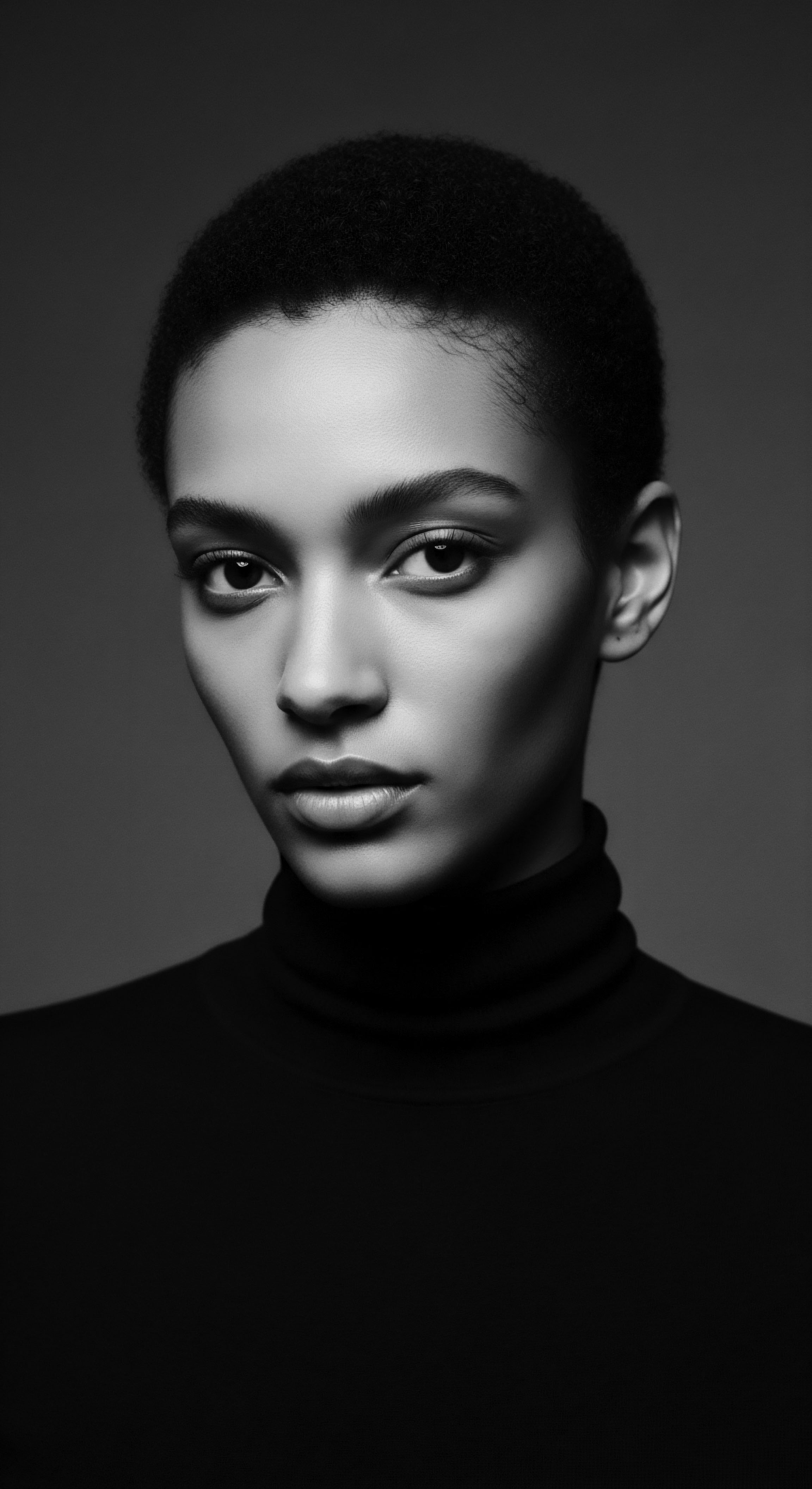
Ritual
The art and science of styling textured hair are not merely about aesthetics; they are expressions of a living heritage, a continuum of practices passed through hands and hearts across generations. For centuries, the rituals surrounding hair dressing in Black and mixed-race communities have been acts of community building, self-expression, and resilience. These traditions, rich with meaning, often stand in stark contrast to workplace policies that, intentionally or unintentionally, pressure individuals to conform to narrow standards of appearance. Examining this collision helps us see how professional environments shape deeply personal decisions about hair, forcing a difficult choice between authenticity and perceived acceptability.
In many African societies, the act of styling hair was a communal event, a time for sharing stories, wisdom, and the latest news. It was a practice steeped in social connection and spiritual significance. The intricate patterns of Cornrows, the symbolic coils of Bantu Knots, or the majestic ascent of the Afro were not simply styles; they were visual languages, speaking volumes about status, region, and identity. These practices, rooted in necessity (like protection from environmental elements) and cultural expression, became hallmarks of a distinct aesthetic tradition.

How do Historical Styling Techniques Influence Current Professional Perceptions?
The evolution of styling techniques for textured hair, from ancient braided forms to the natural hair movement of today, tells a story of adaptation, artistry, and defiance. Protective styles, for example, have a long and storied heritage. From their origins as practical solutions for longevity and manipulation, they have become powerful symbols of cultural pride. Yet, these very styles—braids, locs, and twists—have frequently been the subject of scrutiny, deemed ‘unprofessional’ in corporate settings.
This historical bias, often subtle, sometimes explicit, creates a dilemma for individuals seeking to honor their heritage while navigating career paths. The ancestral wisdom embedded in these styles, designed for hair health and expression, clashes with a narrower aesthetic ideal.
The historical legacy of workplace policies has often forced a painful choice between cultural authenticity and professional advancement for those with textured hair.
Consider the historical example of the Tignon Laws enacted in colonial Louisiana in the late 18th century (Don’t touch my hair!, 2022). These laws compelled free women of color to cover their elaborately styled hair with scarves, a deliberate effort to distinguish them from white women and reinforce a societal hierarchy. While the scarves themselves became canvases for new forms of adornment, the underlying intent was control through appearance.
This historical act of policing Black women’s hair mirrors, in spirit, some of the implicit biases found in modern workplace grooming policies. Even more recently, the “Comb Test,” which involved a fine-tooth comb being hung outside an establishment, implicitly suggesting that if one’s hair could not be easily combed, entry was denied, points to how seemingly innocuous tests were used to enforce Eurocentric beauty standards and deny access (Halo Collective, n.d.).
- Braids ❉ Ancient African communities used braided styles to signify tribal association, marital status, age, and spiritual beliefs. These intricate patterns were also practical, protecting the hair.
- Locs ❉ Beyond their modern aesthetic appeal, locs possess deep spiritual and cultural meaning across various traditions, including Rastafarianism and certain indigenous African practices, embodying a commitment to natural growth and selfhood.
- Bantu Knots ❉ Originating from the Zulu people of Southern Africa, these tightly coiled knots served as protective styling and a symbol of cultural identity, predating modern hair science’s understanding of twist patterns.
The emergence of wigs and hair extensions also has a rich historical and cultural context within Black communities, often as a means of versatility, protection, or conformity. These too were not merely accessories; they were tools of presentation, adapting to shifting societal expectations while maintaining a connection to aesthetic traditions. Today, the choice to wear wigs or extensions can be a decision rooted in personal preference, a desire for stylistic range, or, indeed, a response to perceived professional pressures. The dialogue around workplace policy must recognize these deep historical currents that influence styling decisions.

Relay
The journey of textured hair—from its biological source to its styled expression—finds its continuation in the daily regimen of care, the sacred nighttime rituals, and the solutions sought for its maintenance. This relay of care, passed from elder to youth, from tradition to innovation, is deeply intertwined with questions of holistic wellness and ancestral wisdom. When workplace policies intervene, they do not simply affect external appearance; they ripple through practices rooted in heritage, influencing not just hair decisions but deeper connections to self and lineage.
The insistence on a homogenous aesthetic, often unspoken yet profoundly felt, compels many with textured hair to alter their natural state. This often involves processes that compromise hair integrity for the sake of conformity. The economic and health costs associated with such alterations—from chemical relaxers to excessive heat styling—are significant. Consider the sobering statistic ❉ in 2022, Black consumers spent $2.3 billion on hair care, marking it as their largest category of beauty and skin purchases (Economic Policy Institute, 2023).
Much of this investment has historically been driven by the need to conform to dominant beauty standards. This economic expenditure, paired with the potential for physical harm to hair and scalp, presents a clear manifestation of the pressure exerted by unspoken professional norms and, at times, explicit policies.
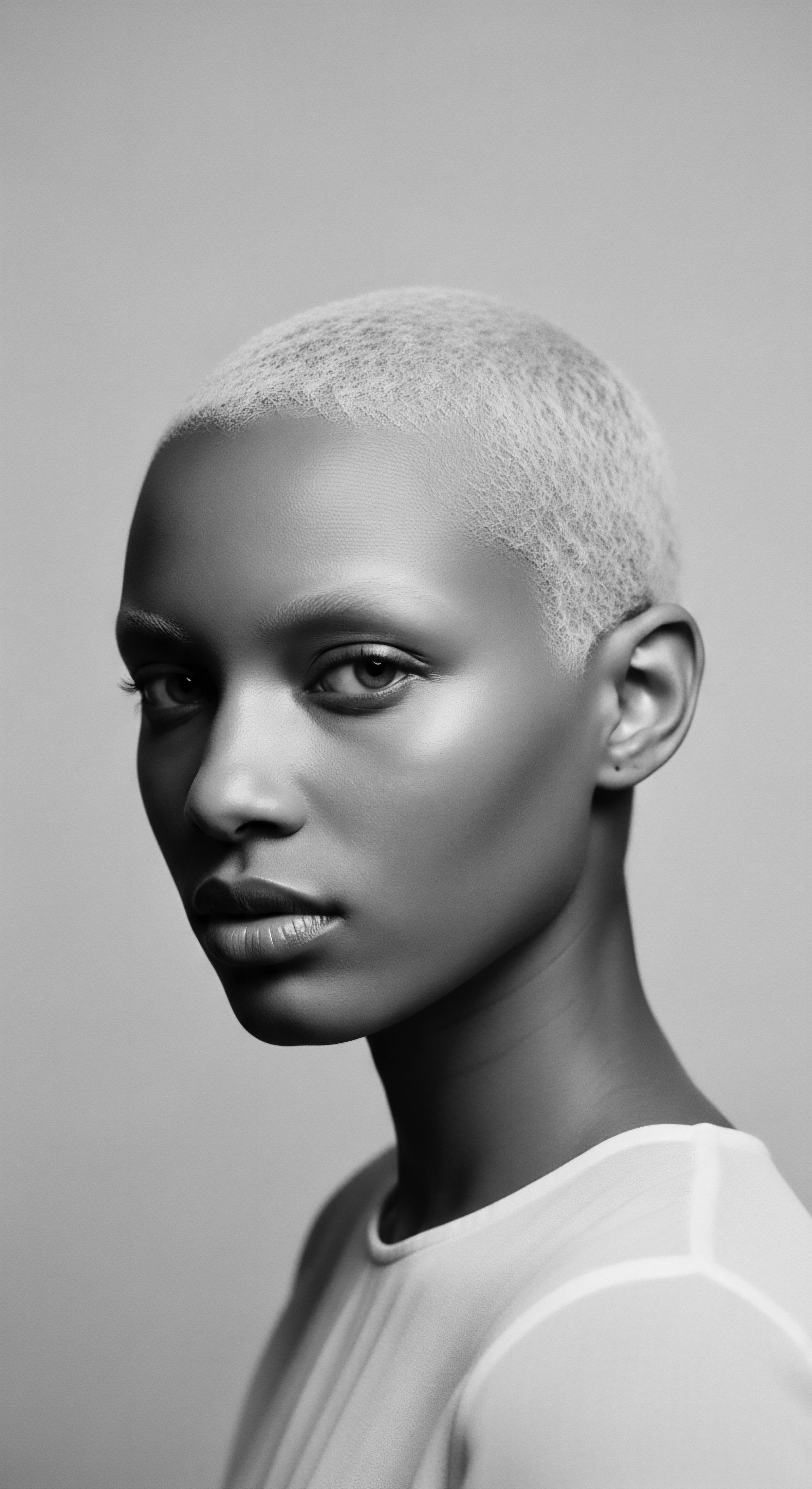
How does the CROWN Act Seek to Protect Textured Hair Heritage in the Workplace?
The Creating a Respectful and Open World for Natural Hair, or CROWN Act, stands as a legislative effort to safeguard individuals from discrimination based on hair texture and protective hairstyles commonly associated with race. This measure acknowledges that hair can be a declaration of personal identity and serve as a symbol of heritage and ancestry. It recognizes that policies prohibiting natural hairstyles like afros, braids, Bantu knots, and locs have been used to justify the removal of Black individuals from workplaces and educational settings. Before this legislation, individuals often faced a difficult choice ❉ risk consequences for their natural hair or invest time and money to conform to Eurocentric standards.
This Act, now law in several states, represents a pivotal step in challenging systemic racism embedded within appearance policies. It aims to ensure that no one is forced to leave parts of themselves behind when they arrive for work or school.
The CROWN Act stands as a legislative echo of the enduring fight for hair liberation, recognizing that one’s hair is deeply intertwined with identity and heritage.
The impact of historical biases is not abstract. The 2023 CROWN Workplace Research Study found that Black Women’s Hair is 2.5 Times More Likely to Be Perceived as Unprofessional compared to white women’s hair. This perception translates into tangible outcomes ❉ approximately two-thirds (66%) of Black women adjust their hair for a job interview, with 41% changing from curly to straight styles.
Moreover, over 20% of Black women aged 25-34 have been sent home from work due to their hair. These figures paint a stark picture of how workplace policies, or the implicit biases they allow to flourish, directly influence textured hair decisions, pushing individuals away from styles that are culturally resonant and often healthier for their hair.
| Aspect of Workplace Impact Perception of Hair |
| Pre-CROWN Act Landscape Textured hair frequently deemed 'unprofessional'. |
| CROWN Act's Protective Intent Challenges biased perceptions, affirming natural hairstyles as professional. |
| Aspect of Workplace Impact Hiring & Employment |
| Pre-CROWN Act Landscape Discrimination in interviews and employment opportunities. |
| CROWN Act's Protective Intent Prohibits denial of employment due to hair texture or style. |
| Aspect of Workplace Impact Hair Decisions |
| Pre-CROWN Act Landscape Pressure to straighten hair for conformity. |
| CROWN Act's Protective Intent Empowers individuals to wear culturally significant styles without penalty. |
| Aspect of Workplace Impact The CROWN Act seeks to align workplace environments with the enduring cultural and personal significance of textured hair. |
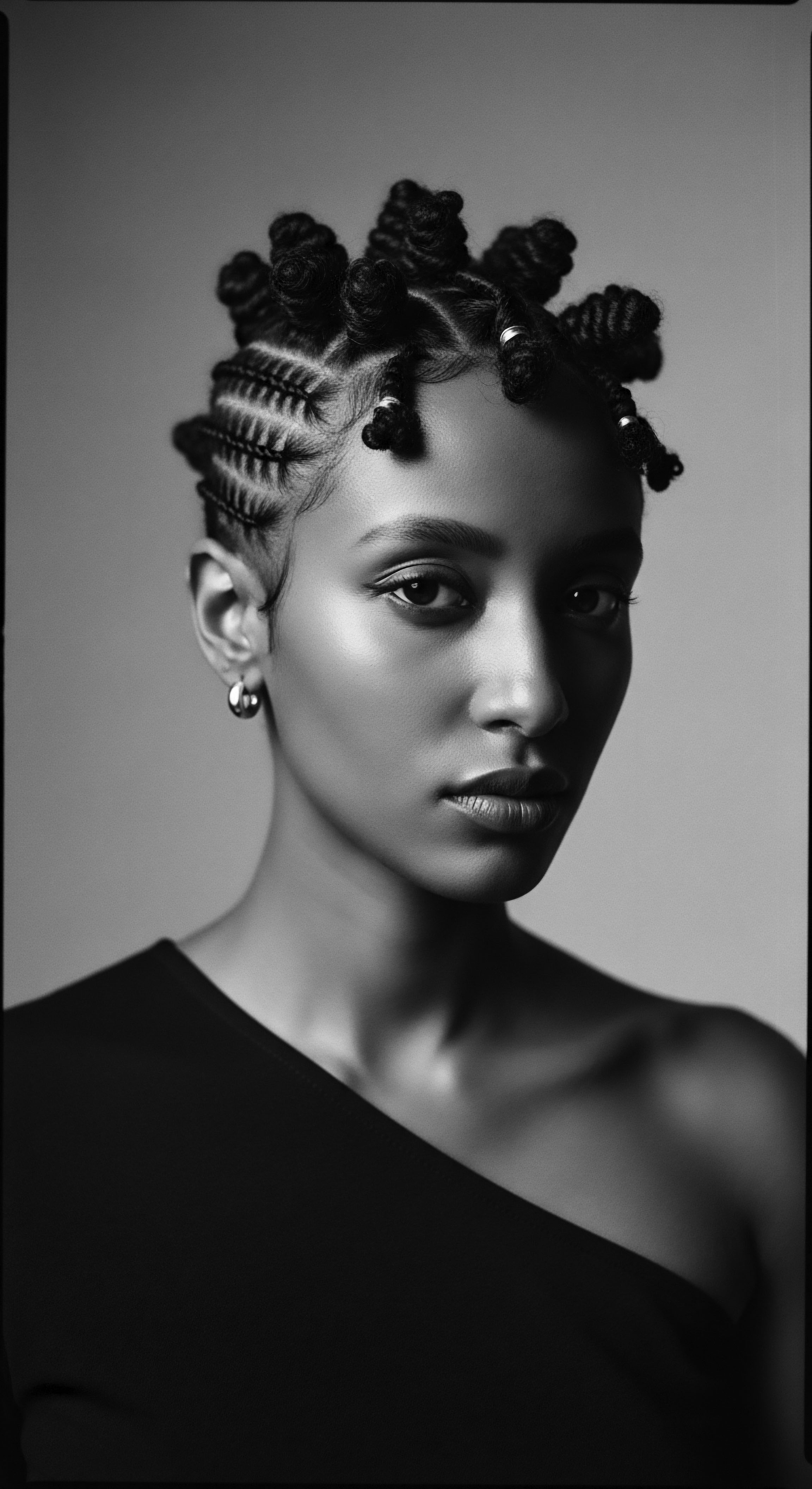
What Traditional Ingredients Inform Modern Textured Hair Regimens?
The shift towards holistic care, often inspired by ancestral wisdom, represents a conscious effort to reclaim practices that truly serve textured hair’s needs. Many modern hair care formulations draw inspiration from traditional ingredients long utilized across African communities. These ingredients were chosen for their deep nourishing properties and their ability to sustain hair health in diverse climates.
- Shea Butter ❉ From the karite tree, this rich butter has been used for centuries across West Africa for its moisturizing and protective qualities, shielding hair from environmental aggressors.
- Argan Oil ❉ Derived from the argan tree of Morocco, this liquid gold has been a staple in North African hair care, prized for its ability to soften, add sheen, and aid in scalp wellness.
- Coconut Oil ❉ A common ingredient in many diasporic cultures, particularly those with Caribbean and South American heritage, valued for its ability to penetrate the hair shaft and reduce protein loss.
- Aloe Vera ❉ Used in various ancestral traditions for its soothing and hydrating properties, offering relief to the scalp and strengthening hair strands.
The nocturnal sanctuary—the bedtime ritual of protecting hair with bonnets or scarves—is another practice steeped in heritage. This simple yet profound act, designed to preserve moisture, prevent tangles, and protect delicate styles, reflects centuries of collective knowledge about maintaining textured hair. Workplace policies that implicitly or explicitly discourage natural styles can undermine these very regimens, pushing individuals towards choices that are not only less healthy for their hair but also disconnect them from practices deeply intertwined with their cultural self-care. The ongoing relay, therefore, involves advocating for spaces where the full spectrum of textured hair, and the traditions that nourish it, can exist without compromise.

Reflection
The journey through the intricate world of textured hair, viewed through the lens of heritage and its interaction with contemporary workplace policies, unearths a profound narrative. We have traced the elemental biology of the strand, explored the artistry of its historical adornment, and witnessed the persistent relay of care practices across time. This exploration reveals that hair is not merely keratin and protein; it is a living archive, a repository of ancestral knowledge, a declaration of identity, and a testament to enduring resilience.
Current workplace policies, whether explicitly stated or subtly implied, continue to exert a substantial influence on textured hair decisions. They present a dilemma for individuals, particularly Black and mixed-race people, who navigate professional spaces while striving to honor their heritage. The pressure to conform to narrow aesthetic ideals, often rooted in Eurocentric standards, can lead to personal compromise, economic burdens, and a disconnect from cultural practices that offer both wellness and a sense of belonging.
Yet, within this ongoing tension, a powerful movement for recognition and celebration persists. Initiatives like the CROWN Act, born from collective advocacy, stand as beacons of progress, attempting to legally enshrine the right to wear one’s natural hair without fear of discrimination.
The essence of a strand, as Roothea perceives it, is a continuous story—a story of adaptation, beauty, and unwavering spirit. Our heritage compels us to seek harmony between our inner truths and external environments. This harmony extends to our hair, a vibrant part of our selfhood.
As workplaces slowly awaken to the value of genuine diversity, not just in thought but in appearance, the future holds the promise of spaces where textured hair can be worn in all its glory, where ancestral practices are respected, and where the decisions made about one’s hair are truly a matter of personal affirmation, rather than external dictate. The narrative continues to unfold, one luminous strand at a time, each coil and curl contributing to a richer, more authentic professional tapestry.

References
- Dove and LinkedIn. (2023). 2023 CROWN Workplace Research Study. As cited in Economic Policy Institute, 2023; TestGorilla, 2023; Canadian HR Reporter, 2023.
- Economic Policy Institute. (2023). The CROWN Act ❉ A jewel for combating racial discrimination in the workplace and classroom.
- Halo Collective. (n.d.). End Hair Discrimination.
- JSTOR Daily. (2019). How Natural Black Hair at Work Became a Civil Rights Issue.
- Legal Defense Fund. (n.d.). Hair Discrimination FAQ.
- MWH Law Group LLP. (2020). Hair Discrimination in the Workplace.
- Tangle Teezer. (n.d.). Afro-Textured Hair Discrimination.
